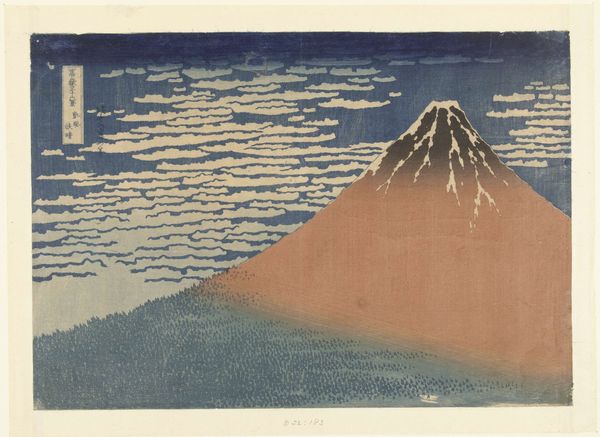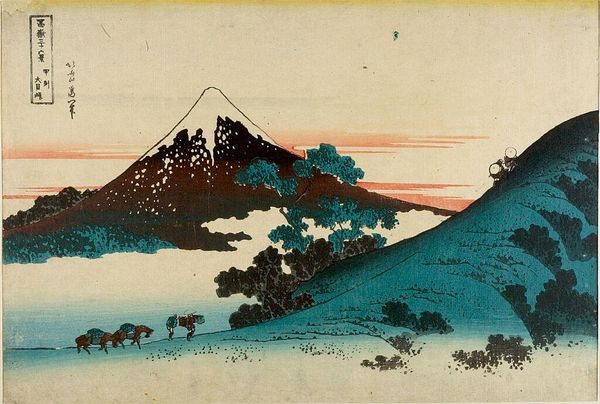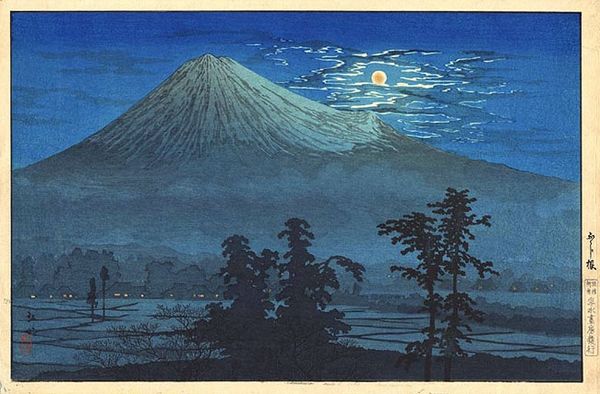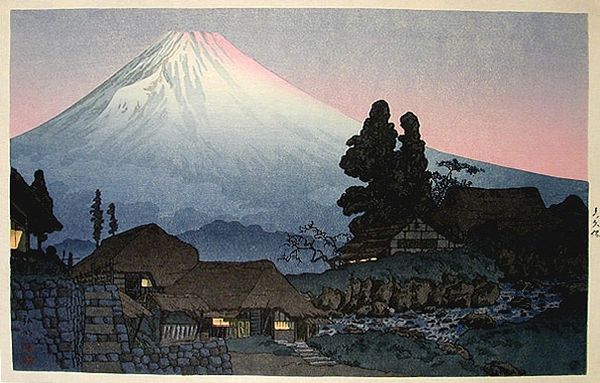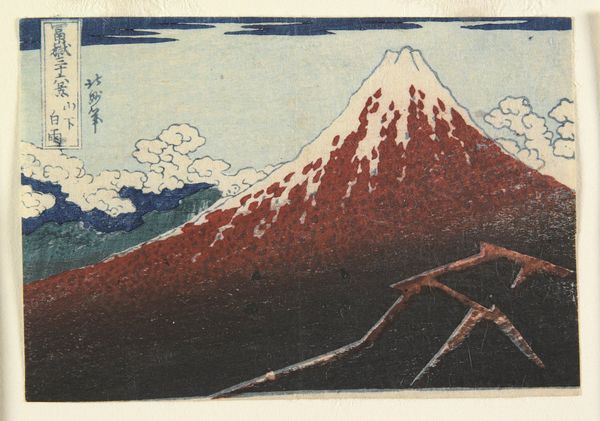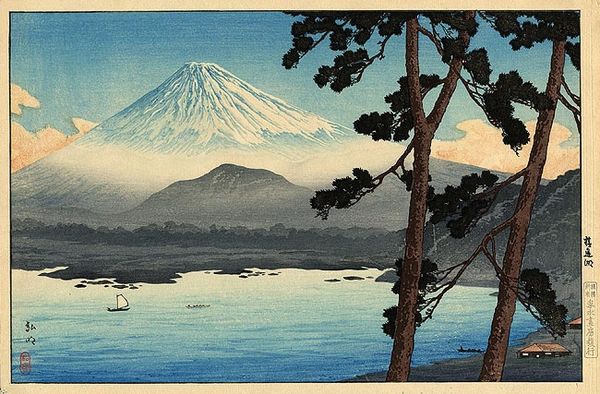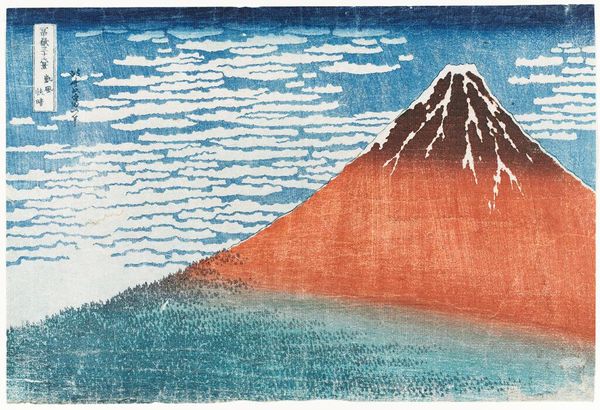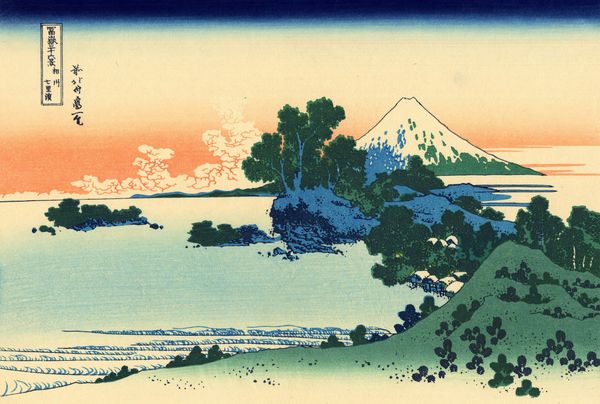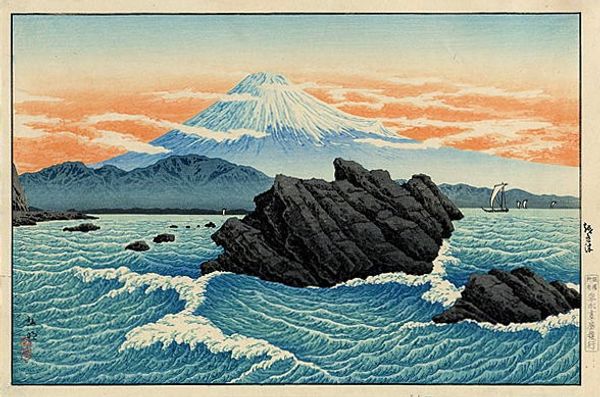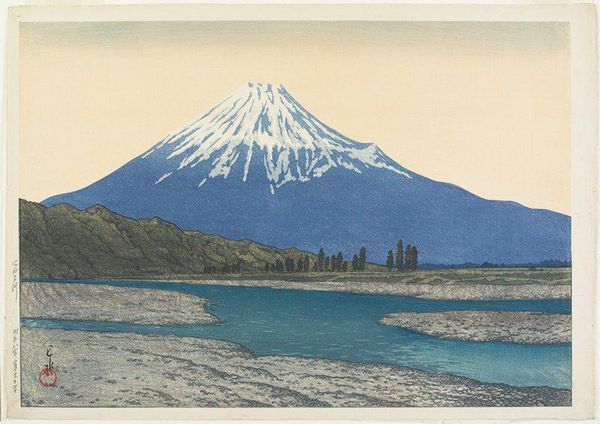
Copyright: Public domain
Editor: This is "Fuji from Hakone," a 1932 woodblock print by Shotei Takahashi. It's quite striking; the snow-capped Mount Fuji dominates the skyline over these shadowy hills. What can you tell me about it? Curator: Well, considering this ukiyo-e print, let's consider its historical context. The early 20th century saw the rise of Shin-hanga, which revitalized traditional woodblock printing, integrating Western Impressionist influences. What effect do you think this integration has on the work's accessibility to a broader, potentially Western, audience? Editor: I think the more impressionistic rendering of the sky gives it a dreamier, universal appeal, a softening of the traditional Japanese print. The bold use of color is new to me. Curator: Precisely. The pre-modern era expected that artists served the propagandistic efforts of those in power. However, after that obligation diminished, artists became increasingly keen to pursue their own interests. Do you see evidence of this trend manifesting itself here, especially as it speaks to the consumption and appreciation of landscapes in the emerging leisure culture of Japan during the early Showa period? Editor: I can see that – it feels more like personal expression, like capturing a moment, as opposed to something strictly for the elite. The mountains become accessible to more than the rulers who live above them. Curator: Absolutely. Prints like these played a key role in shaping perceptions of Japan, both domestically and internationally. The beauty of Fuji was packaged for mass consumption. Editor: That’s fascinating; it’s like early tourism promotion! It makes you consider the motivations behind depicting this subject in this style and disseminating it. Curator: Exactly. Considering art through the lens of cultural production provides new avenues to explore art, challenging its autonomy by focusing on socioeconomic history and consumption. Editor: That’s definitely a fresh perspective for me, viewing a serene landscape as part of a larger system of image production and cultural identity! Curator: It encourages you to think about art’s purpose beyond aesthetics.
Comments
No comments
Be the first to comment and join the conversation on the ultimate creative platform.

